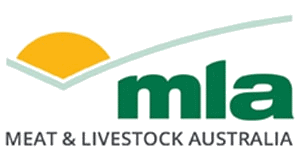Optimising grain and pasture yields after amelioration
| Project start date: | 01 April 2025 |
| Project end date: | 01 December 2028 |
| Project status: | In progress |
| Livestock species: | Grass-fed Cattle, Sheep, Lamb |
| Relevant regions: | Southern Australia, South Australia |
| Site location: | SA: Meningie East, Field |
Summary
Sandy soils dominate 45% of the Southeast of South Australia, many of which are deep, free-draining, and naturally low in carbon and the essential nutrients required for growing crops and pastures efficiently. Production is further compromised by challenges such as water repellence, compaction, and acidity. Surveys conducted with producers between Meningie and Coonalpyn reveal that over 30% of respondents perceive these constraints to affect 80-100% of their arable land. While grain growers in the region have widely adopted amelioration practices to maximise access to stored soil water, uptake among graziers has been slower, largely due to a lack of confidence, equipment, and understanding of the benefits of amelioration.
Although industry guidelines exist, the adoption of strategic soil testing and fertiliser programs remains limited. Producers are uncertain about the cost-benefit and long-term return on investment in these practices, particularly in the local environment.
This MLA GRDC Partnership PDS project aims to demonstrate that strategic soil sampling and targeted nutrient applications, designed to meet crop and pasture demand, can be done affordably, leading to increased yields and more sustained responses after amelioration. A core group of 10 producers farming between Meningie and Coonalpyn will be engaged in the project, building on the momentum generated through the current MLA Non-wetting Sands Project.
Objectives
Objectives of the project - By May 2028 in the Coorong District Council area in Upper Southeast SA, the project will establish three demonstration sites, engaging 10 core producers and 60 observer producers to:
- Demonstrate that crop and pasture yield improvements >25% can be achieved through the implementation of strategic soil testing and nutrient applications after ameliorating soil physical and chemical constraints.
- Conduct Cost-Benefit analysis to assess the economic performance of improved nutrient management strategies compared to current practice.
- Deliver three Skills and Training Development workshops that build the knowledge, skills and confidence of 10 Core Producers (100%) to adopt precision approaches to soil testing and nutrient management in cropping and grazing systems.
- Facilitate seven core producer meetings and host three Spring Field Walks to showcase the results of on-farm experimentation and encourage adoption of key practices through peer-to-peer learning.
- Develop and disseminate three case studies and publications to the wider industry to increase awareness of project outcomes.
- Facilitate Adoption: 80% of core producers will adopt new nutrient management practices, and 25% of observers will express their intent to adopt.
Get involved
<p style="font-size: 18px;">To find out more contact the PDS facilitator:</p>
<p style="font-size: 18px;">Melissa Fraser</p>
<p style="font-size: 18px;"><a href="mailto:mel@soilfunction.com.au">mel@soilfunction.com.au</a></p>
<p style="font-size: 18px;">Tracey Strugnell</p>
<p style="font-size: 18px;"><a href="mailto:tstrugnell@coorong.sa.gov.au">tstrugnell@coorong.sa.gov.au</a></p>


